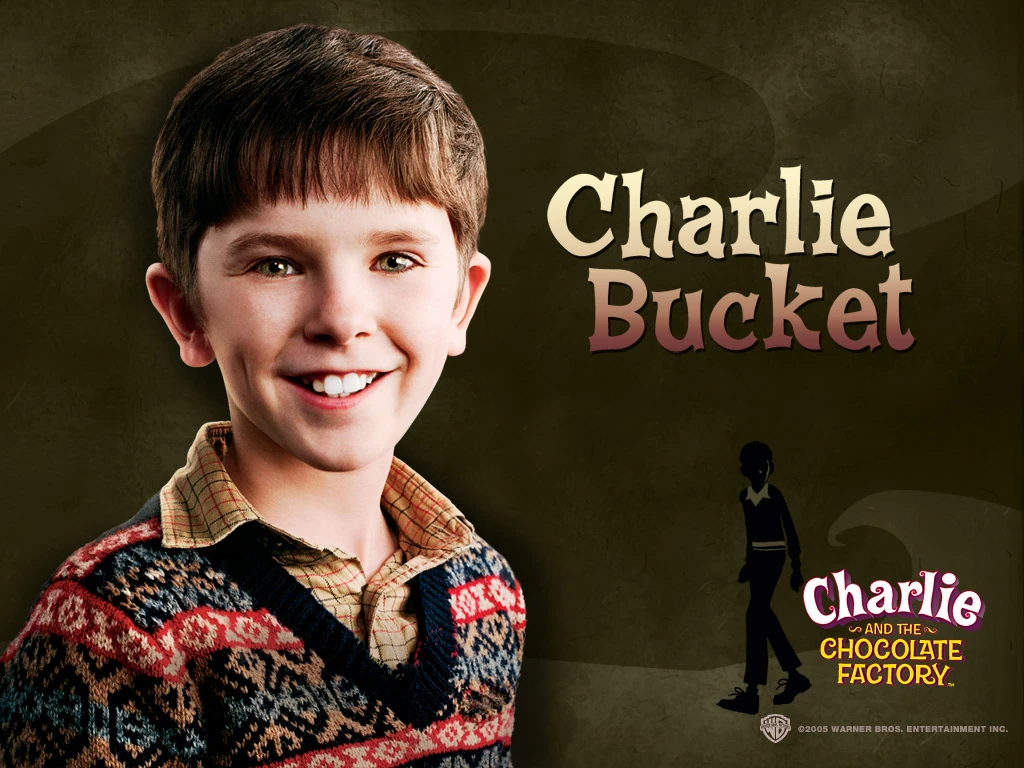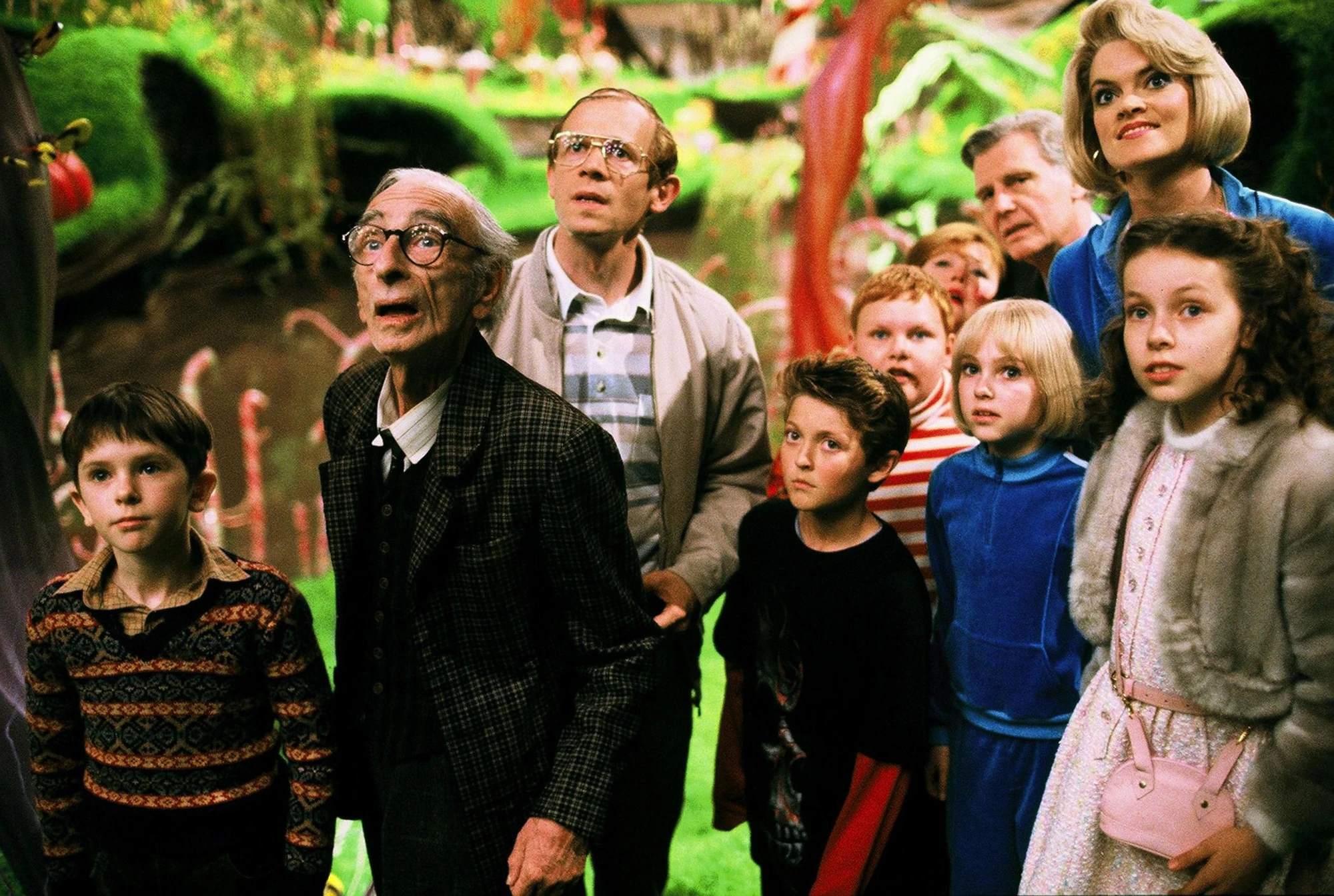Charlie Bucket, the protagonist of Roald Dahl's beloved novel "Charlie and the Chocolate Factory," has captured the hearts of readers and viewers alike for decades. From the pages of the book to the silver screen, Charlie's journey through the magical world of Willy Wonka's chocolate factory remains timeless and enchanting. This article delves into the various images of Charlie, exploring how he has been portrayed in literature, film, and popular culture.
Whether you're a fan of the original book, the classic 1971 film, or the more recent 2005 adaptation, Charlie's character resonates with people of all ages. His humility, kindness, and sense of wonder make him a relatable and inspiring figure. Through this article, we'll explore the visual representations of Charlie, analyzing how different interpretations bring this iconic character to life.
As we journey through the world of Charlie and the Chocolate Factory, we will uncover the evolution of Charlie's character and the significance of his images in shaping our understanding of the story. From sketches to photographs, we'll examine how artists and filmmakers have brought Charlie's charm and innocence to the forefront of storytelling.
Read also:Young Patrick Dempsey The Early Life And Journey Of A Hollywood Icon
Table of Contents
- Biography of Charlie Bucket
- Book Illustrations: Charlie's Visual Debut
- Film Adaptations: Bringing Charlie to Life
- Character Development Through Images
- Symbolism in Charlie's Images
- Charlie in Popular Culture
- Artistic Interpretations of Charlie
- Fan Art and Community Contributions
- Contemporary Relevance of Charlie's Images
- Conclusion
Biography of Charlie Bucket
Before diving into the images of Charlie, let's first explore the character's background. Charlie Bucket is a young boy from a poor family living in a small house with his parents and four grandparents. Despite his humble circumstances, Charlie is kind-hearted, respectful, and always optimistic.
Key Facts About Charlie Bucket
Below is a table summarizing Charlie's personal details:
| Name | Charlie Bucket |
|---|---|
| Age | Approximately 11 years old |
| Family | Parents: Mr. and Mrs. Bucket; Grandparents: Grandpa Joe, Grandma Josephine, Grandpa George, Grandma Georgina |
| Residence | A small house in a fictional town |
| Personality Traits | Kind, humble, curious, and compassionate |
Book Illustrations: Charlie's Visual Debut
The first visual representation of Charlie came from the illustrations in Roald Dahl's original book. These illustrations, often created by renowned artists like Quentin Blake, provide readers with a glimpse into Charlie's world. The sketches emphasize Charlie's innocence and simplicity, capturing his essence through minimalistic yet expressive art.
Key Characteristics of Book Illustrations
- Simple line drawings that reflect Charlie's modest lifestyle
- Focus on Charlie's facial expressions to convey emotions
- Use of muted colors to represent the setting and atmosphere
Film Adaptations: Bringing Charlie to Life
Charlie's journey has been brought to life on the big screen through two major film adaptations. The 1971 version, "Willy Wonka & the Chocolate Factory," and the 2005 version, "Charlie and the Chocolate Factory," both offer unique interpretations of Charlie's character. These films use cinematography and special effects to create vivid images of Charlie, making his story more accessible to a wider audience.
Comparison of Film Versions
- 1971 Film: Portrays Charlie as a gentle, wide-eyed boy, played by Peter Ostrum
- 2005 Film: Depicts Charlie as a more introspective and curious character, played by Freddie Highmore
Character Development Through Images
The evolution of Charlie's character is evident in the various images associated with him. From the early sketches in the book to the cinematic portrayals, each image adds depth to his personality. The use of visual elements such as clothing, expressions, and surroundings helps convey Charlie's values and motivations.
How Images Influence Perception
- Charlie's ragged clothes symbolize his poverty but also highlight his resilience
- His joyful expressions reflect his optimism despite challenges
- His interactions with other characters reveal his empathy and integrity
Symbolism in Charlie's Images
Images of Charlie often carry symbolic meanings that enhance the narrative of the story. For instance, the golden ticket represents hope and opportunity, while the chocolate factory symbolizes imagination and creativity. These symbols are intricately woven into the visual representation of Charlie, making his journey more meaningful.
Read also:Morr Mercedes The Ultimate Guide To Luxury And Performance
Key Symbols in Charlie's Story
- Golden Ticket: A metaphor for dreams and aspirations
- Chocolate Factory: A representation of limitless possibilities
- Family Portrait: Emphasizes the importance of relationships and support
Charlie in Popular Culture
Charlie's influence extends beyond literature and film, permeating popular culture in various forms. From merchandise to fan art, Charlie's images have become iconic symbols of childhood innocence and wonder. This section explores how Charlie's character has been embraced by fans worldwide.
Examples of Charlie in Popular Culture
- Collectible figurines and toys based on Charlie
- Art exhibitions featuring interpretations of Charlie
- Social media trends celebrating Charlie's legacy
Artistic Interpretations of Charlie
Artists from different backgrounds have reimagined Charlie through various mediums, including paintings, digital art, and sculptures. These interpretations offer fresh perspectives on Charlie's character, showcasing the versatility of his image. By exploring these artworks, we gain a deeper appreciation for the universal appeal of Charlie's story.
Notable Artistic Works
- Oil paintings capturing Charlie's serene moments
- Digital renderings that blend fantasy and reality
- Sculptures that emphasize Charlie's physical attributes
Fan Art and Community Contributions
Fans of Charlie and the Chocolate Factory have created an abundance of fan art, contributing to the character's enduring popularity. These creations range from simple sketches to elaborate digital compositions, showcasing the creativity and dedication of the fan community. This section highlights some of the most impressive fan art pieces.
Benefits of Fan Art
- Encourages creativity and self-expression
- Fosters a sense of community among fans
- Keeps the character's legacy alive through new interpretations
Contemporary Relevance of Charlie's Images
In today's fast-paced world, the images of Charlie continue to resonate with audiences. They remind us of the importance of kindness, humility, and curiosity in navigating life's challenges. By revisiting these images, we can draw inspiration from Charlie's journey and apply his values to our own lives.
Why Charlie's Story Still Matters
- Highlights the power of perseverance and hope
- Encourages empathy and understanding
- Celebrates the magic of imagination and creativity
Conclusion
Throughout this article, we have explored the captivating images of Charlie from Charlie and the Chocolate Factory. From the original book illustrations to the cinematic portrayals and fan art, Charlie's character has been depicted in countless ways, each adding to his rich legacy. His story continues to inspire and delight audiences around the world.
As you reflect on the images of Charlie, consider how his values can be applied to your own life. Share your thoughts in the comments below or explore other articles on our site to discover more about the world of Roald Dahl and beyond. Together, let's celebrate the timeless charm of Charlie and the Chocolate Factory!


